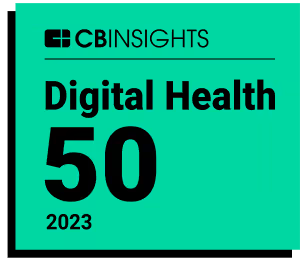
Preparing for V28: The experts weigh in
The imminent changes to HCC coding recently announced by the Centers for Medicare & Medicaid Services (CMS) will not only impact Medicare Advantage (MA) risk scores—they also pose a complicated organizational and clinical challenge owing to a transition period where the outgoing (V24) and incoming (V28) risk adjustment models will both carry weight. Practices affected by the transition must ensure that they have the tools in place to assist them in properly coding according to both models, without the additional burden detracting from their main focus: delivering quality care to their patients.
In a recent webinar hosted by Navina and the National Primary Care Transformation Summit, three experts dove deep into the changes and shared winning strategies to help guide organizations through the choppy waters of the transition. Here are some key takeaways from the event.
1. Map out your organization’s challenges
Dana McCalley, Navina’s Vice President of Value-Based Care, highlighted the importance of mapping out the variety of challenges that each organization will face in the transition to V28, and coming up with a game plan to handle each challenge. These include:
Systems and workflows: The transition to V-28, which includes moving from ICD-9 to ICD-10 codes, requires preparing and sometimes upgrading systems like electronic health records (EHRs) and patient population health systems to ensure that they are up to the task.
Education: Communicating the changes to all individuals working in the organizations and ensuring consistent workflow for every patient walking through the door pose a challenge. Educating staff members about the new codes and processes is crucial.
Managing two different models: The interim transition period entails dealing with both V24 and V28 models, which have different data packages. V28 includes over 200 additional new codes, while over 2,000 will be removed. Analyzing and reporting data under these different models requires a tailored approach.
Forecasting patient severity: It is important for administrators to be able to predict the severity of patients. Understanding the differences between V24 and V28 codes helps in allocating appropriate resources and funds for patient care.
2. Analyze what V28 means for your population—today
Dr. Timothy Dudley, founder of Primary Value and former CMO of Colorado Care Partners Group (HealthOne), emphasizes the importance of modeling the changes in V28 against the specific patient population. The impact of the transition can vary depending on factors such as the prevalence of conditions like diabetes or vascular disease. To project the financial implications for a practice accurately, it is crucial to analyze how these changes will specifically affect its’ patients. While the average drop in coding is projected at 2%-4%, modeling worst-case scenarios for populations heavily impacted by certain conditions, such as diabetes, can reveal much larger drops, with one model showing a 15-16% decrease. Therefore, it is recommended that each practice take the initiative to model the changes based on their own patient population to gain a more accurate understanding of the potential impact. Additionally, this analysis helps identify patients who may not have been properly coded for the 200+ new codes introduced in V28.
To download Navina’s white paper, The Impact of HCC V28 on Medical Groups: Strategies for a Successful Transition, click here.
3. Use the claims hold
The claims hold process is an important tool that is often overlooked. It involves identifying specific codes—in this case, the 268 new codes in V28—and discussing them with the administrative and clinical teams. The claims hold feature is typically available in EHR systems or practice management systems, and it prevents claims from being sent to health plans until they are reviewed and released. By placing these identified codes on hold when submitting claims, it allows for a review by skilled coders to ensure the accurate selection of the appropriate code (to the highest specificity), and associated documentation. This process ensures that credit is received for all services provided and also provides protection in case of an audit. This approach is particularly beneficial when dealing with unfamiliar codes, as it allows for thorough accuracy checks and compliance with documentation requirements. Once the review is complete, the claim is released and processed as usual.
4. Leverage technology
“For most doctors,” as Dr. Yair Lewis, Navina’s Chief Medical Officer, pointed out, “coding HCC models is probably not necessarily the thing that they are most excited about.” That coding burden will be compounded over the next three years, when both V24 and V28 models will be relevant. Navina, an end-to-end value-based platform, can help lift that burden. The platform integrates various data sources, such as EHR data, health information exchange (HIE), and claims data, and utilizes AI-based algorithms to extract and infer diagnoses. It presents clinically useful information to clinicians at the point of care, bridging the gap between different teams within the organization.

Navina streamlines the transition to V28 by factoring in both models and presenting the relevant diagnosis codes to providers, ensuring alignment between organizational goals and clinician goals. The reporting package includes breakdowns of both V24 and V28 scores, as well as composite scores, allowing organizations to analyze their performance over time. Navina also provides dashboards and reporting tools that empower primary care organizations to make data-driven decisions and track performance.
To watch an on-demand recording of the webinar, click here.





















